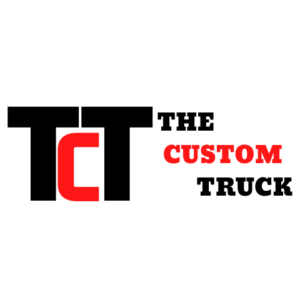Having the ability to tow can be an extremely beneficial skill, for both personal and business reasons. Gone will be the days of hiring moving companies or third-party transporting services: with the know-how outlined below, you’ll have everything you need to know to tow whatever you need to safely.
So, how do you tow with a truck? You first need to find out your truck and trailer’s weight capacities. Then, you need to pick out the correct hitch and ball equipment as well as a trailer for your specific towing needs. Finally, you need to know how to load and attach a trailer properly.
The world of truck towing can be very complicated, and there are a lot of terms, details, and practices that you need to become acquainted with before you hit the road.
Knowing Your Truck’s Towing Capabilities
Perhaps the most critical piece of information for people looking to tow with their trucks is their vehicle’s towing capacities. There are a lot of different numbers that go into this, but luckily the manufacturer of your car will have already done all the math for you.
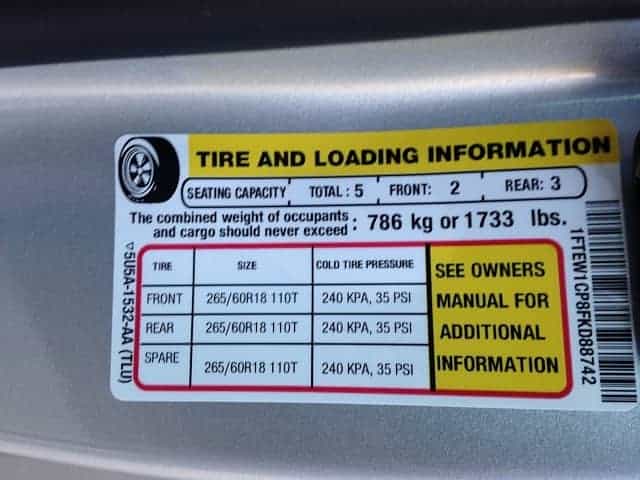
The following information can typically be found in an owner’s manual, and if not, can be found relatively easily online. Regardless, it’s essential to be familiar with the following terms and ratings:
- Gross Vehicle Weight Rating: The GVWR is a measure of the maximum amount that a truck can safely weigh when it is completely loaded. This includes all fluids, cargo, passengers, and whatever else you’re taking with you, excluding the trailer and its contents.
- Gross Combined Weight Rating: The GCWR is the most critical term for people looking to tow. The GCWR is the absolute maximum amount of weight that the truck can safely tow, including the trailer. Effectively, this is the maximum permissible weight of the truck and its contents plus the trailer and its contents.
- Gross Axle Weight Rating: The GAWR is the maximum amount of weight that can be supported by a single one of the truck’s axles. This isn’t an important figure for most towing applications, but it is still something that you should be familiar with.
What goes into a truck’s ratings?
The above ratings are reached by making calculations based on the options that the truck is equipped with. These numbers are a combination of the truck’s transmission capabilities, engine output, and differential gear ratios. Other things go into these ratings, and their calculation is a rather intricate process, but let’s take a moment to look at the things that affect these ratings the most in a bit more detail.
Transmission Capabilities
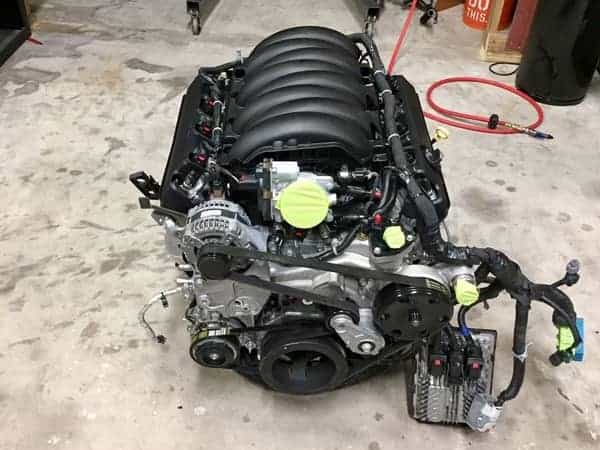
Having a transmission that can handle the extra weight of a loaded trailer is a significant thing to have. For one, the transmission has to be able to withstand the massive torque numbers that trucks with high tow capacities put out. Modern diesel-fueled vehicles are now regularly making nearly 1,000 lb.-ft of torque, and it takes a heavy-duty transmission to distribute that torque safely without breaking.
Additionally, the transmission must have the cooling capabilities to deal with the added load of a trailer. If the transmission overheats, the transmission fluid can become less effective, which can cause severe long-term damage to the gearbox.
Engine Output
No matter how well-suited a truck is for towing, none of that matters if it doesn’t have the grunt to move that weight. While cars often advertise horsepower numbers, trucks are more likely to boast torque figures, as having a high torque output is necessary to get a heavy load moving, and to give the rig the ability to accelerate at a reasonable rate.
Modern diesel engines are now generating crazy torque figures, as mentioned above, but most gasoline-powered trucks are sufficient for everyday towing needs.
Differential Gear Ratios
The final-drive or differential gear ratio is a very important figure for towing. Most modern trucks come with a couple of different options for final-drive ratios, and this allows owners to customize their towing capacity to suit their needs. As a rule of thumb, the shorter the gears, or the higher gear ratio number, the better suited for towing that differential is.
For example, CNET cites the 2019 RAM 1500 equipped with the 5.7L V8, 4WD, and a 3.92 final-drive ratio as being capable of towing 11,340 pounds. However, opting for the longer gears in the form of the 3.21 final drive ratio drops that figure down to 8,240 pounds. As you can see, just slightly longer gears can make quite a substantial difference.
Hitches and Ball Sizes
Now that we’ve laid out all the important information that you need to know about the truck itself, we can start working our way to the back of the rig.
The significant bit that needs to be discussed here is the topic of hitches and balls. These can come in a variety of different shapes and sizes, and each one has its own capabilities. Having a proper understanding of this information is just as important as knowing your truck’s towing capacity, so let’s jump in.
Hitches
The trailer hitch is a piece of equipment that is attached to the frame or chassis of the truck. They protrude from the bumper and allow for the mounting of a ball, upon which the trailer will sit. Hitches are generally broken down into five different classes based on how much weight they can safely support:
- Class 1: No more than 2,000 pounds.
- Class 2: No more than 3,500 pounds.
- Class 3: No more than 8,000 pounds.
- Class 4: No more than 10,000 pounds.
- Class 5: No more than 12,000 pounds.
Most SUVs and light-duty trucks on today’s market will come with a class 3 or below hitch, assuming that the vehicle is equipped with a tow package when applicable. However, trucks that are designed for towing more and that have higher tow capacities can come standard with a class 4 or 5 trailer hitch.
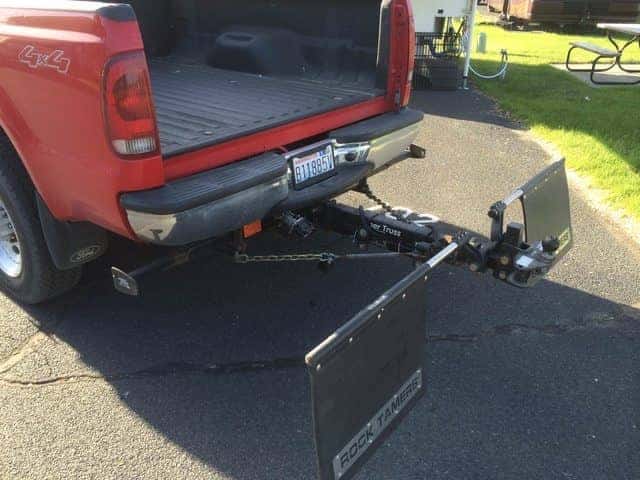
In addition to the weight rating of the hitch, different class hitches also have different sized receiver tubes, which is the square opening that the ball is inserted into.
Class 1 and 2 hitches generally have 1.25” receiver tubes, class 3 hitches have 2” receiver tubes, and class 4 and 5 hitches have 2” or 2.5” receiver tubes, depending on how you chose to spec them out.
Ball Sizes
In addition to a hitch, the other piece of equipment that you’ll need is a ball, a metal sphere that the trailer will mount to. This is the primary point of contact between your truck and trailer, so it is an essential piece of equipment to have right. It is not wise to use a cheap or improperly sized ball.
The amount of weight that a ball can support is a function of its size, with larger balls being capable of supporting more weight than their smaller counterparts. Standard ball sizes are:
- 17/8 inches
- 2 inches
- 2 5/16 inches
It is essential to always make sure that your ball’s rating is not below the weight of your fully-loaded trailer.
The above-mentioned ball sizes are what is typically used for standard towing jobs, generally less than 12,000 pounds. If your trailer weight exceeds this, you may need to go for a heavy-duty ball or a more advanced 5th wheel hitch setup.
5th Wheel Hitches
A 5th wheel hitch is a setup that doesn’t use a traditional ball and hitch, as described above. Instead, a 5th wheel hitch attaches to the truck inside of the bed. The installation of a 5th wheel hitch is a bit more complicated than installing a standard hitch, but they are a worthy investment for people who regularly use their trucks to haul heavy loads.
Installing a 5th wheel hitch will generally consist of a series of bracket mounts upon which a larger bracket is installed; this will allow for the safe attachment of a 5th wheel trailer. Fifth wheel trailers are attached by backing the truck up under the mounting surface of the trailer and lowering the trailer down to attach it properly.
While 5th wheel trailers are a much more involved towing process than a typical ball and hitch setup, they can grant you much more versatility in what your truck can do. With the right vehicle, a 5th wheel hitch can allow for the attachment of animal trailers, RVs, and multi-car carriers. While this may not be necessary for most personal applications (save for RVs), a 5th wheel setup may be a worthy investment for people whose business involves regularly towing hefty loads.
Different Types of Trailers
Now that we’ve covered the different types of hitches and balls that can be used for towing, it’s time to break down the final piece of the puzzle: trailer options. Choosing a trailer is mostly a function of accurately assessing your needs, and different people will have vastly different requirements for a trailer. Using the information outlined below, you’ll be able to decide precisely what type of trailer is most well-suited to your towing needs.
Utility Trailers
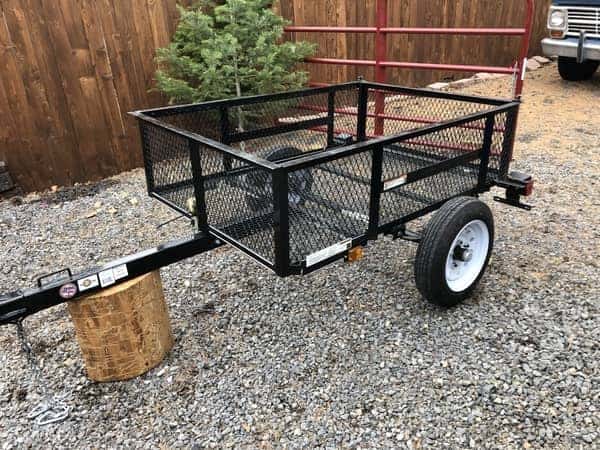
Utility trailers are the most common type of trailer that you’ll see on the road and are great for carrying lawn equipment, ATVs and four-wheelers, and other equipment that can be rolled or driven onto the trailer. Utility trailers have rails on the sides and a tall gate at the back that acts a ramp when folded down, making for easy loading, and unloading. Utility trailers are generally equipped with a wood deck, though a more durable metal deck can be optioned as well. Utility trailers are typically rated for under 14,000 pounds.
- Easy loading unloading of wheeled equipment
- Side rails and rear gate/ramp
- >14,000-pound rating
Flatbed Trailers

Flatbed trailers are like utility trailers, except without the rails, and with potential for much more towing capabilities. Flatbed trailers are generally used to tow cars or other heavy-duty equipment that a traditional utility trailer cannot support. Additionally, flatbed trailers can have up to three axles, and be optioned to use a 5th wheel hitch, allowing some to have a rating of up to 30,000 pounds.
- Used to tow cars or large equipment
- Can be optioned with multiple axles and 5th wheel hitch
- Potential for 30,000-pound rating
Enclosed Cargo Trailers
Enclosed cargo trailers are another common type of trailer, and offer the benefit of being able to protect your cargo from the elements. Enclosed trailers are typically heavier than utility trailers though, so be mindful of your truck’s capabilities when using one.
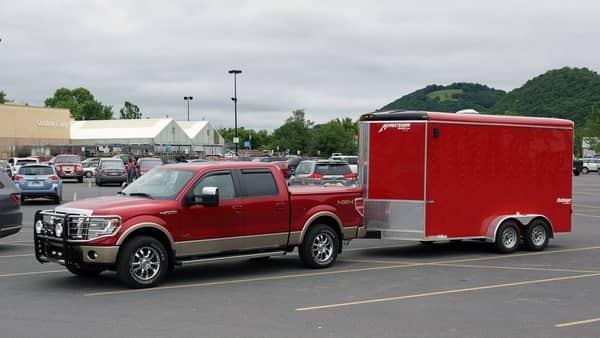
Enclosed cargo trailers are a great way to transport furniture, work equipment, or any other cargo that you don’t want to be exposed while you’re on the open road. Additionally, enclosed cargo trailers are highly customizable in both size and configuration, meaning that you can option them very specifically to suit your needs. Because of this, though, their weight ratings vary wildly depending on how you spec them out.
- A great option for cargo that needs to be protected
- Highly customizable
- Weight ratings range from 2,500-pounds to 30,000-pound depending on options
Animal Trailers
Animal trailers are used for, you guessed it, transporting animals. While this serves a very specific niche, they can be extremely useful for business owners, or people who frequent horse shows, as paying to have your horse trailered can be extremely expensive.
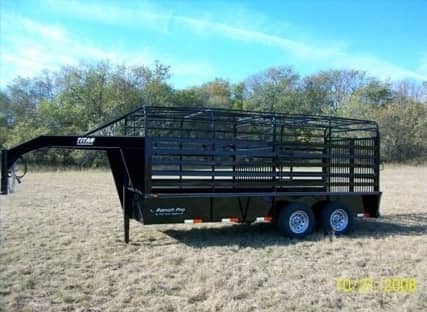
Animal trailers vary wildly in options just as enclosed cargo trailers. Some are equipped with small bedrooms inside and can have a traditional hitch or 5th wheel setup. Ratings also vary depending on options, with some being as low as 3,000 pounds, and some topping 25,000 pounds at the higher end.
- The only safe option for transporting animals
- Highly customizable
- Weight ratings range from 3,000-pounds to 25,000-pound depending on options
In addition to the different types of trailers mentioned above, there are other types of trailers available, too, like dump trailers and tilt-deck trailers. However, these are reserved for very specific jobs, and their difference in functionality generally doesn’t affect the way that they are towed. Thus, their lack of mention in the above list.
Just know that if you need a particular type of trailer, someone out there will likely be willing to make it for you, and the information listed above will still likely apply.
What trailer is right for you?
The type of trailer that is best suited to your needs can only be decided by you, but the most important things to consider are the type of cargo (i.e., Does it need to be enclosed?) and how heavy your load will be. Answering these two questions should be enough to help you narrow down exactly which of the above options is best for your specific towing application.
Getting on the Road: How to Tow
At this point, we’ve broken down your truck’s towing capabilities, the different types of hitches and balls, as well as the different types of trailer options that are available. Armed with all this information, we’re finally ready to get down to the nuts and bolts: how to get on the road with your new towing setup.
Loading the Trailer
Loading your trailer may appear to be as simple as just throwing what you need into it and driving off, but it is a much more delicate process in practice.
This is because a proper weight distribution of cargo on or inside of the trailer is essential to make sure that the trailer is balanced correctly, and will not sway back and forth on the road, or otherwise behave in some unsavory ways. Follow the below steps to make sure that your trailer has been loaded safely:
- Park on a level surface: It’s vital only to load your trailer when it is on a completely level surface; this will ensure that the trailer doesn’t move or shift at all when you begin loading cargo into it.
- Distribute the weight properly: Properly distributing the weight within a trailer is extremely important to make sure that it is safe to tow. If weight is improperly distributed, the trailer may yaw and sway on the road, which can be extremely unsafe for both you and other drivers. The most important thing to consider is tongue weight. Tongue weight is the amount of weight that is exerted on the front-most portion of the trailer, called the tongue. Generally, tongue weight should be between 10% and 15% of the total weight of the trailer. Tongue weight can be measured using a tongue weight scale. Make sure to load the trailer before measuring tongue weight, too. After getting your tongue weight sorted out, it’s also essential to make sure that any heavy items are not high up in the trailer, as this will make the trailer more prone to tipping over.
- Secure items well: This is especially important when transporting heavier wheeled equipment like lawnmowers and ATVs. It’s essential to make sure that these items are in park (or equivalent) with their emergency brakes engaged. Additionally, things like these should always be fastened with ratchet straps. Ratchet straps can work well for other items like weedwhackers, leaf blowers, or boxes, as well.
Attaching the Trailer to the Truck
Now that your trailer is appropriately loaded let’s get it hooked up to your truck!
The first thing that you need to do is grab a second person to give you a hand, as it can be quite a pain to make minute adjustments, only to hop back in and out of your truck to determine how well aligned the ball and trailer are. Some modern trucks have cameras for this, but for older vehicles, the second set of eyes can save some time.
- Park your trailer on a level surface and raise it to give the ball room to get underneath it. Slowly back your truck up, having a second person tell you how much farther back you need to come until the ball and receiver are correctly lined up. When they are, put your truck in park and engage the parking brake, hop out, and lower the trailer’s receiver onto the ball. Make sure that the trailer’s connection to the truck is completely level.
- Ensure that the ball is entirely within the receiver, and then secure a set of chains going from the hitch to the trailer crossing over each other once in an “X” shape underneath the ball-receiver connection. This will add an extra layer of security should the receiver come off of the ball while on the road: it will keep the trailer attached to the truck, and the X shape of the chains will catch the ball and prevent it from falling to the road.
- Once you’ve done this, connect your trailer lights to your truck via the electrical connector in the bumper to get your brake lights and blinkers working. Make sure to test these before you start driving.
Weighing Your Fully Loaded Truck and Trailer
Now that you’ve got everything loaded and hooked up properly, it’s time to put your setup to the test to determine if it is roadworthy. This process entails going to your nearest weigh station and weighing your truck and trailer setup to ensure that it doesn’t exceed your truck’s GCWR. If you’re only towing a small item that you’re sure is below your truck’s GCWR, this isn’t necessary. However, if you have even the slightest reason to believe that you may be nearing that limit, do not skip this step.
The best way to find a truck scale like this is to do some quick Google searching for local truck weigh stations. This will typically cost $10-$20, but is a very quick process, and is a necessary step to take if you think you may be approaching your truck’s GCWR.
At this point, you may be wondering how to get your truck and trailer to the weigh station safely if you haven’t weighed it yet. After all, you’ll have to drive on the road with a potentially overloaded setup to get to the weigh station, right? Right!
So, if you believe that you may be pushing the limits of the GCWR of your truck, it’s best to remove a few items before weighing and bring them with you in another vehicle (perhaps the same friend that helped you attach the trailer) to add in after you’re sure that the truck and trailer can take their added weight.
Consider Some Towing Accessories
Now that you’re well-versed on all the necessary towing know-how, from picking a hitch to safely loading a trailer, it might be a good idea to consider some towing accessories to make your towing experience a bit more enjoyable:
Tow Mirrors

Tow mirrors are a basic modification that you can make to your truck to make it more suitable for towing. Tow mirrors extend further out from the vehicle compared to regular mirrors, allowing you to see further back along the trailer. This gives you a more commanding view of the sides of the trailer. Tow mirrors can significantly increase visibility and are a fantastic investment for frequent towers. The link above will bring you to a set for mid-2000’s GM trucks, but there is sure to be a set for your vehicle available somewhere online.
Trailer Cameras
There are a number of different aftermarket camera options that can be installed on your truck and trailer to improve visibility even beyond the abilities of tow mirrors. These kits range from basic backup cameras all the way to nearly surround view systems and can make towing substantially easier and more enjoyable.
Tongue Weight Scale
As previously mentioned in the trailer loading section, a tongue weight scale can be a great way to make the process of ensuring the balance of your trailer a bit more streamlined. Rather than using a bathroom scale, which can be inaccurate and easily broken, a tongue weight scale is the best way to ensure that your trailer’s weight is distributed correctly.
Electronic Brake Controller
For people who tow frequently, an electronic trailer brake controller can be a worthwhile investment to increase the longevity of the truck’s brakes, as well as make the towing experience a bit easier. These are electronic devices that allow the driver to control the trailer brakes from the cab, and configure their engagement in several different ways, giving the driver much more control over the entire tow rig.
Final Thoughts
Now that we’ve gone through all the things that you need to know to tow safely, as well as some quality of life accessories, you’re officially ready to start towing! Just be sure not to skip any steps, take any shortcuts, or push your truck or trailer’s capabilities.
Towing is inherently more dangerous than driving a truck without a trailer, as a result of the added weight and moving parts, and the proper precautions always need to be taken seriously. However, if done correctly, towing the right way can be very safe, and a handy skill to have!
If you’re thinking of different ways to accessorize your truck or make it more functional, consider checking out my recommended accessories page. I spent a good amount of time picking out mods that can be useful for most pickup trucks.
